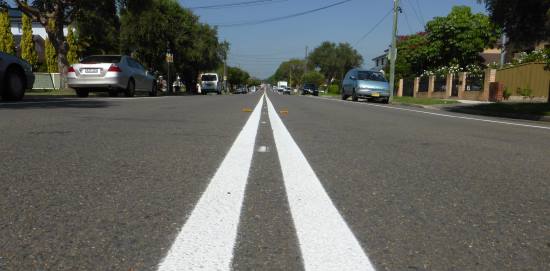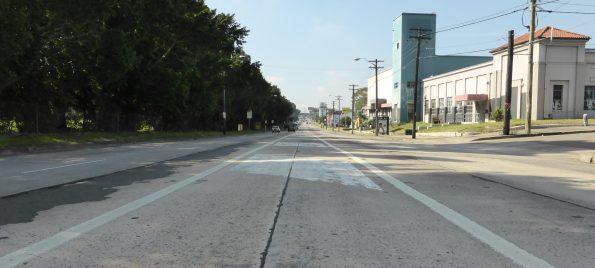
Double white unbroken (continuous) lines mean you are not allowed to overtake in either direction.You can cross an unbroken line to enter a driveway, side road or road-related area from the main carriageway. You can also cross the unbroken line when emerging from a driveway, side road or other area.Unbroken and broken lines are also used to mark the edge of the carriageway. You should not cross an unbroken edge line unless you are stopping, overtaking a vehicle turning right in a two-way street or right or left in a one-way street, turning at an intersection or driving a slow-moving vehicle like a road maintenance vehicle.


A flush median marks an area which can be used to wait to turn right, or to join the traffic flow. It must not be used for overtaking
Arrows indicate a compulsory direction that this lane must follow